Eclectic, quirky, eccentric—these are the adjectives usually associated with Sanjyt Syngh, founder of his eponymous practice Sanjyt Syngh : Spaces + Objects, and you bet he knows; rather agrees with them. Pick any project from his repertoire of work, go through his website or Instagram, and join me in affirming that he eats and leaves no crumbs. A leading luxury interior designer based out of New Delhi with decades of experience, he’s one of the few creators who doesn’t shy away from going the extra mile, pushing the envelope of everything written inside the rulebook of interior design.
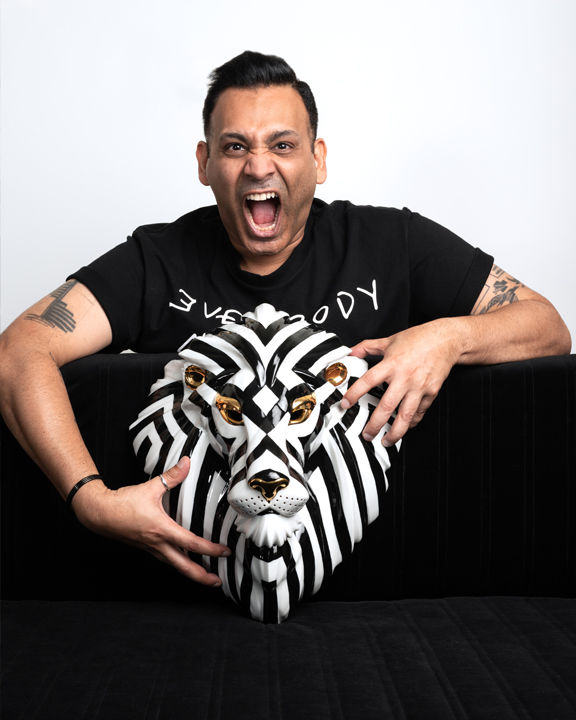
If you ask me, he is a non-conformist, a storyteller, an artist, an influencer, a trendsetter, and whatever next he decides to become. He also calls himself an ‘interpreter’—someone who listens to his client’s requirements and weaves a whimsical yet functional space that can give anyone a run for their money. What makes him stand out in a sea of designers is his firm belief in making ‘bold’ choices; he will never think twice before adding a pop of colour and making a statement!

A big chunk of the world population finds joy in the minimalist interior design style that is characterised by simplicity, clean lines, and a monochromatic palette with colour used just as an accent. However, Sanjyt believes that beyond the beiges, whites and creams, there exists a world ablaze with a kaleidoscope of vibrant hues, where every colour tells a story and paints the canvas of life with endless possibilities. Safe to say, he puts the ‘extra’ in extraordinary with not just the spaces he engineers but even the objects. For instance, the limited-edition Lock and Key chairs were borne out of sheer curiosity, “What is a lock without a key and what is a key without a lock? But ever wondered when they both mate – what goes on?”
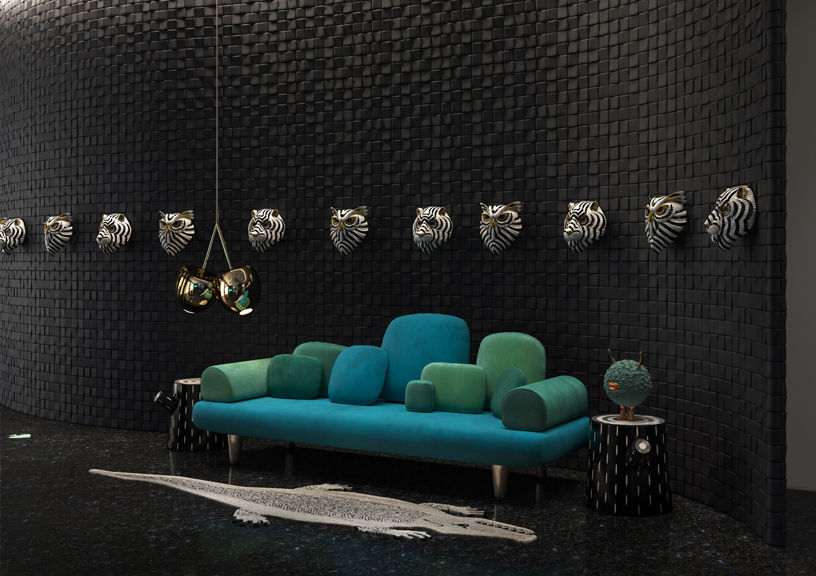
The process he follows is straightforward—he uses the power of layering different textures and mediums to create a space that reflects the personality of its users by working with an exclusive team of craftsmen and vendors from across the world. Sanjyt believes that a perfectly tailored, polished and precise space reflects who you are, which is why he aims for perfection in every inch through detailing every millimeter! Even his personal style is a testament to the idiosyncrasy he brings out in all his projects. A fun fact about him: His sneaker collection can put all these Gen-Z sneakerheads to shame!
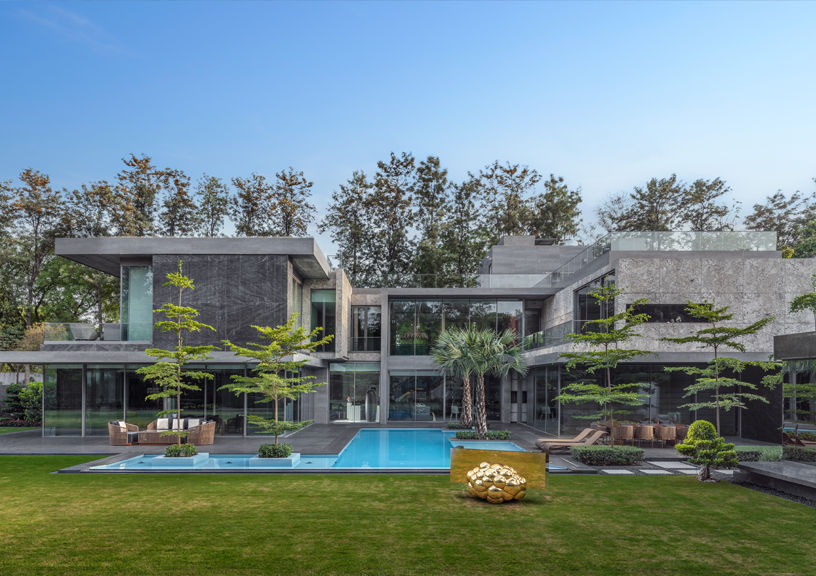
For someone with such a unique taste in design, I was curious to know where he gets his dose of inspiration from. And like everyone else, I assumed he added the ‘y’ in his name for numerology’s sake, but I was wrong. It’s just the way he likes it. With more such assumptions and questions in mind, I sat with him in his awe-inspiring studio and engaged in a candid conversation. Read on for an insightful discourse and get acquainted with the genius of Sanjyt Syngh:
Kashish Kaushal (KK): Can you share a bit about your background and what led you to become an interior designer? Were there specific influences or experiences that shaped your design sensibilities early in your life?
Sanjyt Syngh (SS): I have had a passion for design since I was a little kid. When I go back to my earlier memories, I remember being called a destructive child by my father. I wanted to open and pull apart everything. I was always inquisitive about how things were made. I would invariably be sitting under, or inside pieces of furniture to figure out the construction details or would turn garments inside out with a seam ripper, while my parents would be out for dinner. I started working at a really young age. While kids my age would be hanging out at the park, I’d frequented the sampling room in my parents’ garment factory. Also, I don’t have a routine. I think it would bore me. As Tom Ford said in one of his interviews, “If you are excited in life, you will be better at creating.” I love working on Sundays because there is no distraction. Half the world I know are people who wouldn’t disturb me over the weekend and the other half is usually recovering from their Saturday night outs.
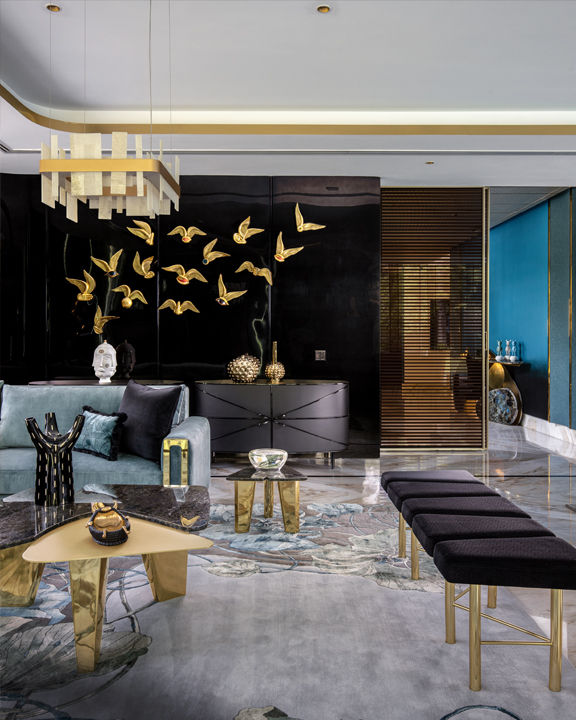
KK: What was your first job? Tell us about the experience of setting up your own practice.
SS: I started creating things and objects when I was little. And have been creating ever since. I call myself a mix of influences. I grew up in New Delhi, India but moved to New York for under graduation. After finishing my under graduation at Fashion Institute of Technology, New York I continued to stay there to gain professional experience and worked with some amazing designers and architects. After almost a decade, I decided it was time for a change. This time, I moved to London for my post-graduation. Altogether I spent about 12 years away from India before I decided it was time to move back home. That’s when Sanjyt Syngh as a design consultancy was born. I call myself the Creative Director of my company, but I think I fill in many roles, more like a ‘Creative-preneur’.
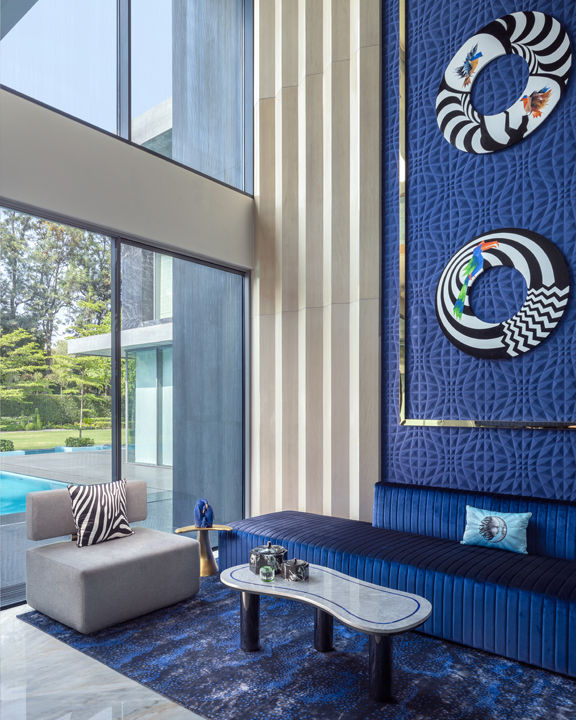
KK: How has your design style evolved over the years? What would you say is your signature style or design philosophy?
SS: I work out of New Delhi, but I try and create work that you can see anywhere in the world. My approach is very global. I am not looking to create avant-garde spaces. I create spaces that have a unique identity that appeals to the inhabitants. Truth be told, I have never been able to differentiate between ‘Sanjyt Syngh’ as a person and ‘Sanjyt Syngh’ as a designer. It’s not a job for me. It’s a way of life. Even when I go to bed, I have a sketchbook and my laptop within one arm’s distance. I am constantly designing. The best of the ideas come at 3 am to me when I am curled up in bed and it’s all dark. Dark spaces inspire me; black inspires me. 99% of my wardrobe is black. And I also love colour, but not so much for myself.
I love using colour in my spaces, it’s extremely important to me and to explain why, I will have to go back to my childhood. My parents used to export garments and handicrafts back in the day. All my evenings after school and holidays were spent in the factory. I grew up in that environment. I even remember interacting with some of the overseas buyers and designing products for them on the spot. Being exposed to all that made me fall in love with colour and textures. I have tried my hands at so many things—from designing garments, home furnishings, to visual merchandising and spaces. I started observing trends carefully and as a result, one of the services we offer at my studio is Trend and Colour Forecasting. Thus, the colours I use in my interior design project are mostly trend driven. I also use them in such a way that you can change a couple of things and you’ll have an entirely new space.
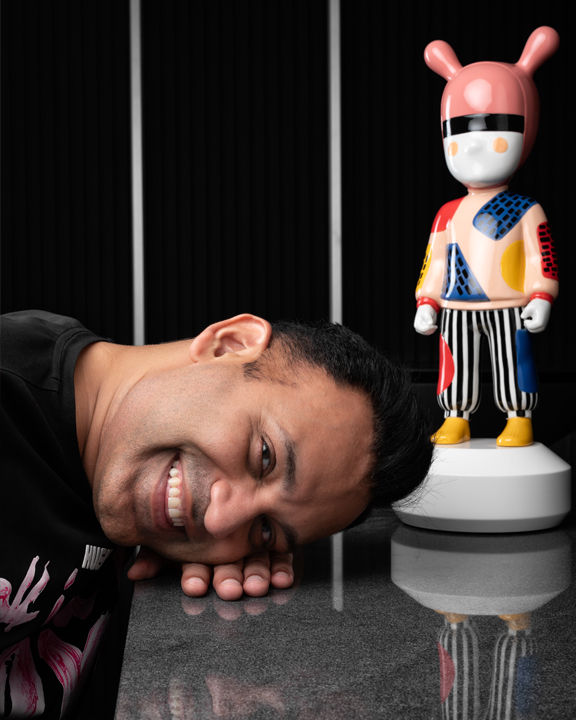
KK: How do you approach the creative process when starting a new project? Are there any specific principles or values that guide your design decisions?
SS: If I had to define this in one word it would be “Organic”. I build and design in layers; in phases. I don’t repeat concepts and details. Once a space has been designed, there isn’t another one which will have the same elements. I don’t label myself as a designer. I am more of an interpreter. I believe in writing stories based on client briefs. I always try and put people who own the space in the environment and think how they would feel. A space should always reflect the style of the inhabitants. We’ve heard a lot about androgyny in fashion but not as much in interiors. That’s one rule I follow while designing a space. A space shouldn’t be gender specific unless it has specific needs. Another rule I swear by is that a space needs to be functional. And who says that functional spaces can’t be pretty? This is where my role as a designer begins. I start my process by designing the layout. When I say designing the layout, I literally mean designing it.
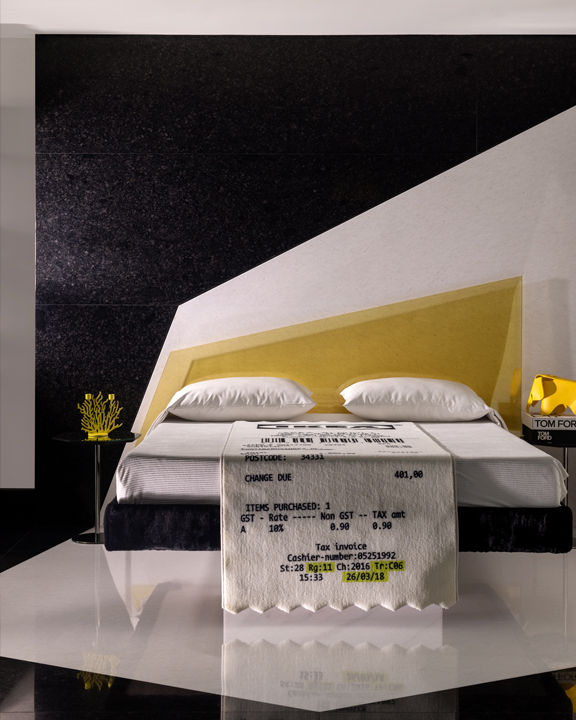
KK: Your designs are often described as quirky and eclectic. How do you balance bold, unique elements while maintaining a cohesive overall design? What inspires your choice of unconventional elements in your designs?
SS: I call myself weird and by that, I mean ‘good-weird’. This is just who I am as a person. I infuse myself and my personality into my work. The tagline of my firm is ‘This is not a barber shop’. I don’t like direct influences. If someone comes and tells me something like “the inspiration for this room was the ocean and all I see is the colour blue,” I wouldn’t call that a concept. You can just call it a blue room instead.
It is important to balance every line of sight. I don’t overdo unconventional elements. One or two are enough in a space. I play a lot with colour as well. It is important to balance colour too. I usually use the 60:30:10 rule which is using 60% primary colour, 30% secondary colour and 10% accent colour, Though I change this around too. I have experimented and turned it into the 90:10 rule. It takes a big mix of elements to form a space. And they all have their role to play. Be it a chandelier or that candle in the right colour. It’s the smaller details that play a bigger role. Also, as cliché as it may sound, I am inspired by travel. I collect things from my travels. Sometimes I feel I only travel to collect. To sum this up in a sentence, I just feel that every space should be a conversation starter.
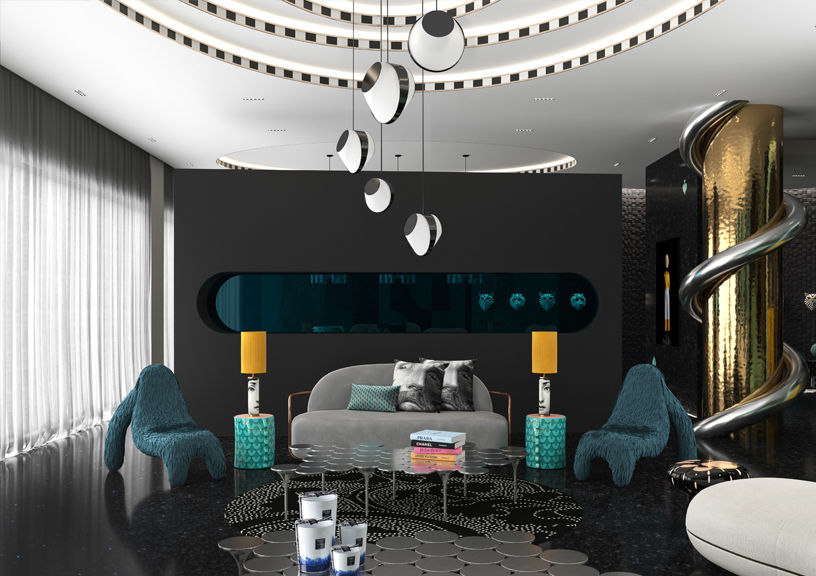
KK: Have there been any collaborations or partnerships that significantly influenced your work? Are there designers, artists, or other figures who have inspired you?
SS: Yes! I love working with brands that have a youthful yet bold vibe. To name one, I’ve loved working with Lladró. Not only do they bring design to the table, but they also add drama to the space.
As far as designers or artists who have inspired me, I could fill up an entire magazine with names. There are lots of people and experiences that influence us. I have learnt so many things from so many different people and I consider all of them icons because they’ve changed my life and the way I think in various ways. From the pattern drafter at my parents’ factory–who taught me the foundation of the how things are constructed, to my mother, who made sure that dinner had to be laid in a certain way and her artefacts had to be kept at a specific angle. From Tom Ford to Karl Lagerfeld. I might or might not follow their design aesthetics but the way they think, or function is certainly inspiring. There are so many other figures like Thom Browne, Peter Marino, Yayoi Kusama, Robert Montgomery, Jaime Hayon. The list is endless, and they all come from different walks of design.

To read the full interview, grab a copy of our December 2023 or click here to subscribe!
